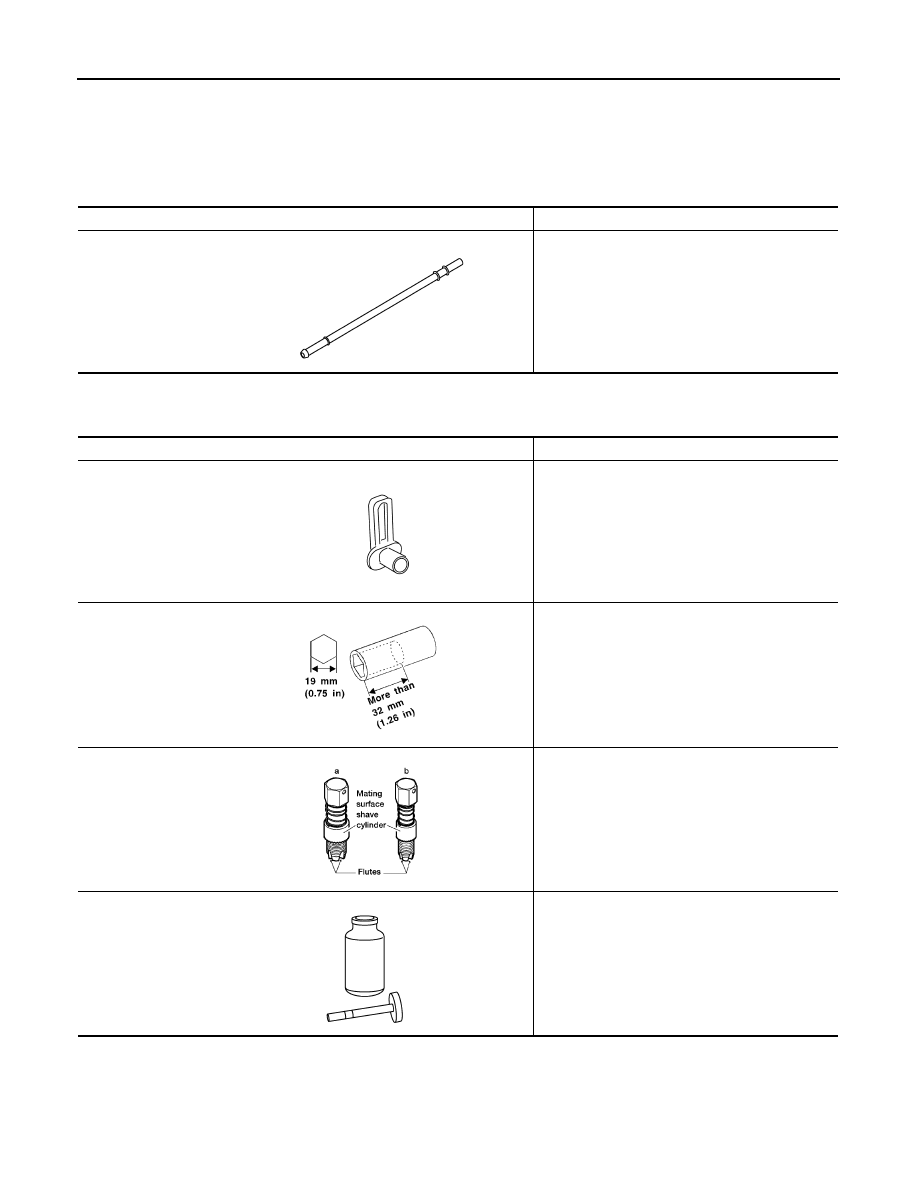Nissan Teana J32. Manual - part 468

EC-410
< PREPARATION >
[VQ25DE, VQ35DE]
PREPARATION
PREPARATION
PREPARATION
Special Service Tools
INFOID:0000000003943273
Commercial Service Tools
INFOID:0000000003943274
Tool name
Description
Fuel tube adapter
Measuring fuel pressure
PBIB3043E
Tool name
Description
Quick connector re-
lease
Removes fuel tube quick connectors in engine
room
Socket wrench
Removes and installing engine coolant tempera-
ture sensor
Oxygen sensor thread
cleaner
Reconditions the exhaust system threads before
installing a new oxygen sensor. Use with anti-
seize lubricant shown below.
a: 18 mm diameter with pitch 1.5 mm for Zirco-
nia Oxygen Sensor
b: 12 mm diameter with pitch 1.25 mm for Tita-
nia Oxygen Sensor
Anti-seize lubricant
i.e.: (Permatex
TM
133AR or equivalent
meeting MIL specifica-
tion MIL-A-907)
Lubricates oxygen sensor thread cleaning tool
when reconditioning exhaust system threads.
PBIC0198E
S-NT705
AEM488
S-NT779